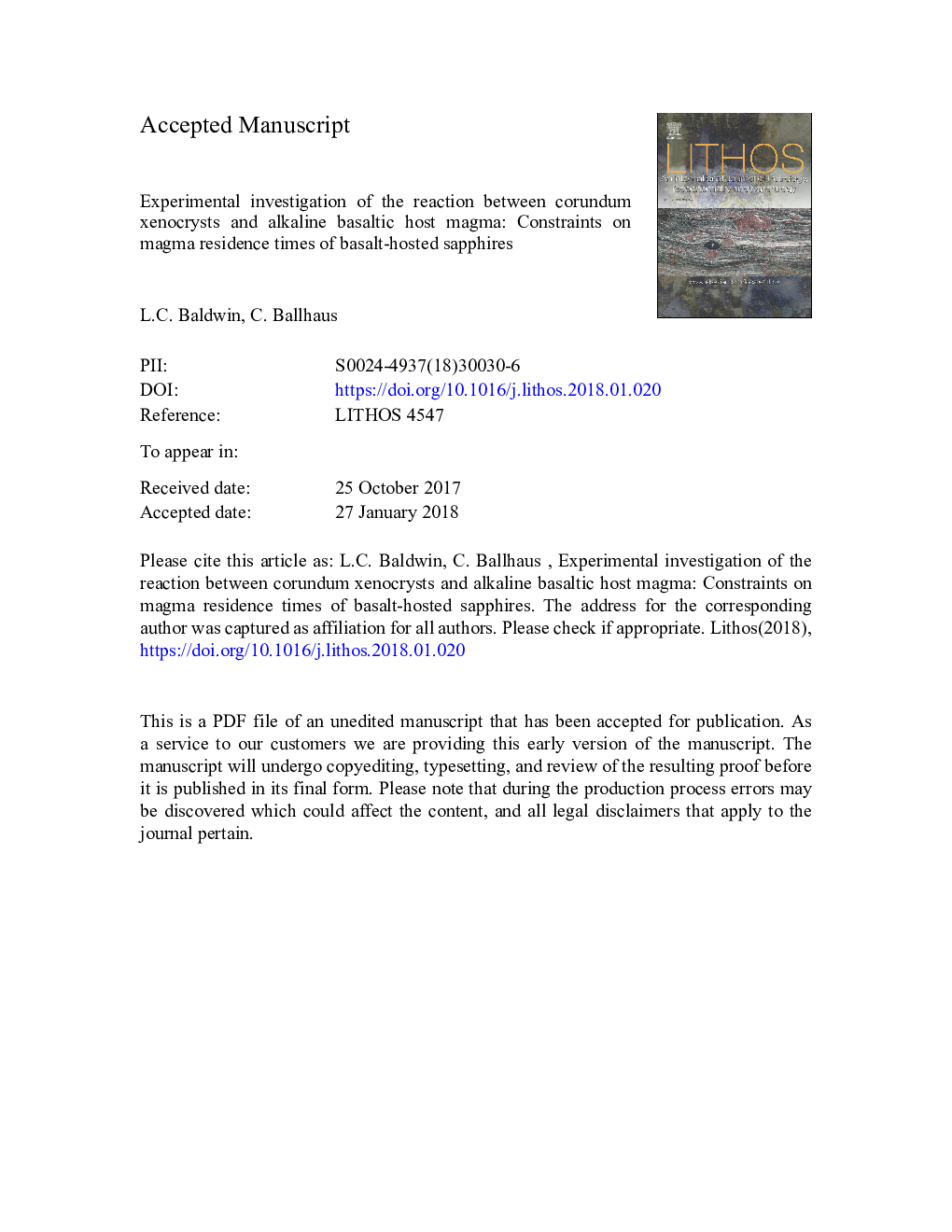| Article ID | Journal | Published Year | Pages | File Type |
|---|---|---|---|---|
| 8911731 | Lithos | 2018 | 34 Pages |
Abstract
Megacrystic sapphires (Fe-Ti-rich corundum) of up to 5â¯cm in size are well known from alkaline mafic rocks from intra-continental rift-related magmatic fields. There is no doubt that these sapphires represent xenocrysts that were trapped from their original lithology by ascending basaltic magmas carrying them to the Earth's surface. Most studies about basalt-hosted sapphires address the question about the origin of the sapphires, but there is hardly any information available about the time the sapphires resided inside the carrier melt. Sapphires are in reaction relationship with basalt and produce spinel coronas at the sapphire-basalt interface, spatially separating the mutually incompatible phases from one another. Assuming isothermal and isobaric conditions of spinel rim formation, the rim-thickness should be a function of the reaction time with the basaltic melt. In this paper, we report time-series experiments aimed at investigating the kinetics of spinel rim formation due to igneous corrosion of corundum. Therefore, we reacted corundum fragments with alkaline basalt powder at 1250â¯Â°C and 1GPa, using a Piston Cylinder Apparatus. The width of the spinel rim was used to estimate a residence time. Extrapolating the experimentally derived reaction rates to the thickness of natural spinel rims as described from the Siebengebirge Volcanic Field, Germany, and from Changle, China, we estimated residence times in the order of a few weeks to months.
Related Topics
Physical Sciences and Engineering
Earth and Planetary Sciences
Geochemistry and Petrology
Authors
L.C. Baldwin, C. Ballhaus,
